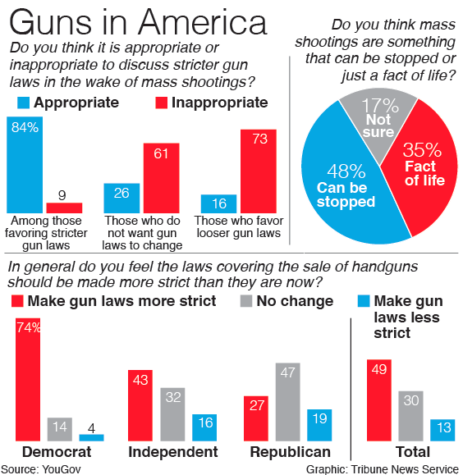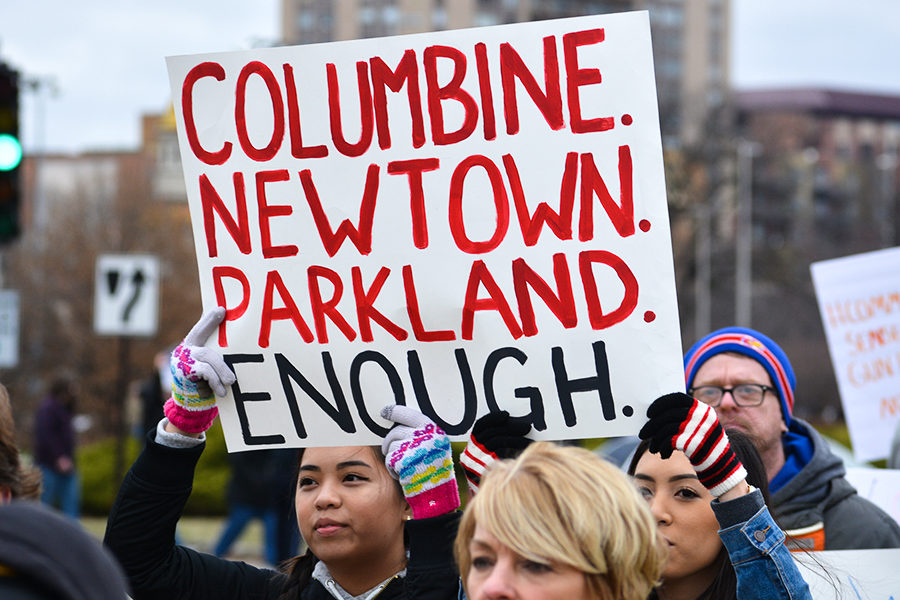Headcounts Influence Headlines
The continuity of extreme gun violence and mass shootings in the United States goes underreported by the short media cycles of today.
PHOTO | Kelly Nugent
Two girls march down Emanuel Cleaver II Blvd holding a sign above their heads to advocate for gun control at the March For Our Lives in Kansas City, Missouri March 24.
In Benton, Kentucky there were 20. In Melcroft, Pennsylvania there were five. In Cleveland, Ohio there were six. These are three injury and death counts of the over 28 mass shootings in just the first six weeks of the year, according to the Gun Violence Archive. As so often is the case many of these attacks go unreported in a heavily renewed media cycle that is lately filled with presidential conspiracies and nuclear warfare crises.The most recent mass shooting to respond with major media coverage was the Parkland, Florida school shooting Feb. 14 with reports from CNN, NBC, The Independent and the New York Times. Slowly but surely, the other 27 examples of this horrific scene and reason for advocacy in 2018 are starting to fall through the cracks. If media outlets continue to overcast this issue with tabloid worthy “news,” many will cease to understand the societal problem with guns and the unfortunate losses of the country that come with this.

The massacres that have shaped modern society the most are the ones that have been covered by the media. Columbine, respectively, was covered head to toe with 24-hour news coverage that changed the way America defines “mass shooting” within a week of its occurrence. The preventative measures such as active shooter handbooks and heightened security within public areas have also been increasingly encouraged over the past decade, according to the U.S. Department of Homeland Security. However, they’re never enough to fix the problem, nor keep the attention on these horrors long enough to ultimately affect change. Sandy Hook, Orlando, Dallas, Sutherland Springs and Las Vegas lived the inevitable story of intense media coverage for a week or two.They have become one of the dozens of historical events that momentarily affected a culture, with no long-lasting change or reform to fix the problem that created it: gun violence.
The rising number of these events happening just in 2017 alone have generated a huge debate within America. This incorporates two of the top five mass shootings in the history of the United States happening within two months of each other last year, according to CNN. Yet, the higher the body count the bigger the headline, while dozens of others go largely unreported. This desensitization if anything has caused more problems in the past decade. The lack of reporting has caused many to believe violence is eradicated. This unawareness creates a bubble, in the same way many thought racism no longer exists in the 21st century because they didn’t hear about the Civil Rights Movement or police brutality anymore until this past decade.
Gun control and violence seem like a surprise every time a mass shooting occurs. So much so, reform for the problem doesn’t start soon enough. New media cycle, new conversation towards a solution, panel after panel and no progress is made. However, the constant conversation will be a continuous progression to a solution. Even though there is a second amendment, the first amendment’s power stands stronger than ever. The voice of a generation groomed in gun violence is being heard through national school walkouts throughout the month of March. A solution to the violence is advocacy. Now more than ever young adults are speaking up for what they believe in while being spurred by the victims of the Parkland, Florida shooting. Now the focus is finally on the victims, and not the perpetrators. Keeping the problem in the news forces constant coverage instead of being overshadowed by the claims of porn stars and Kardashian newborns.



